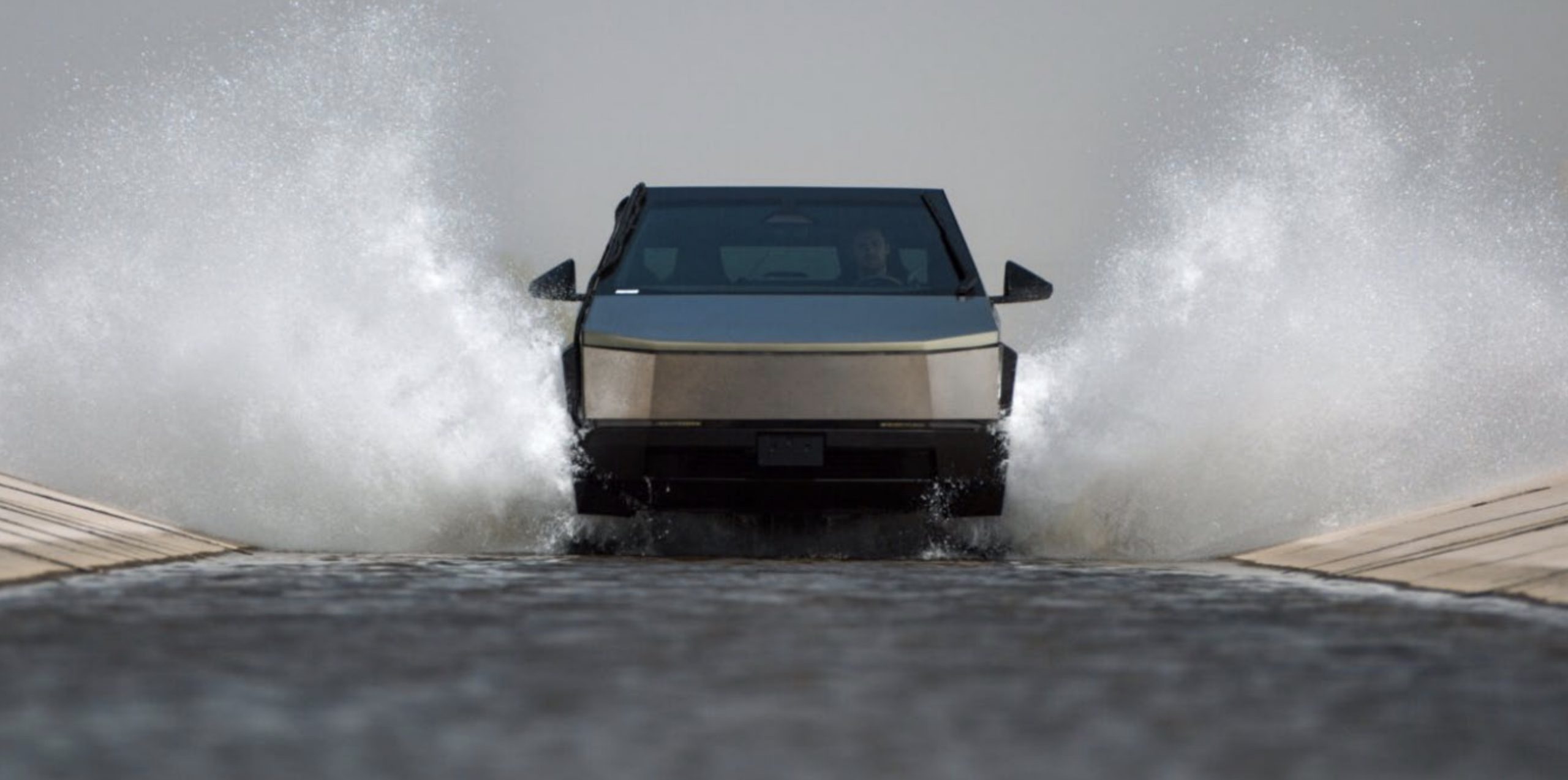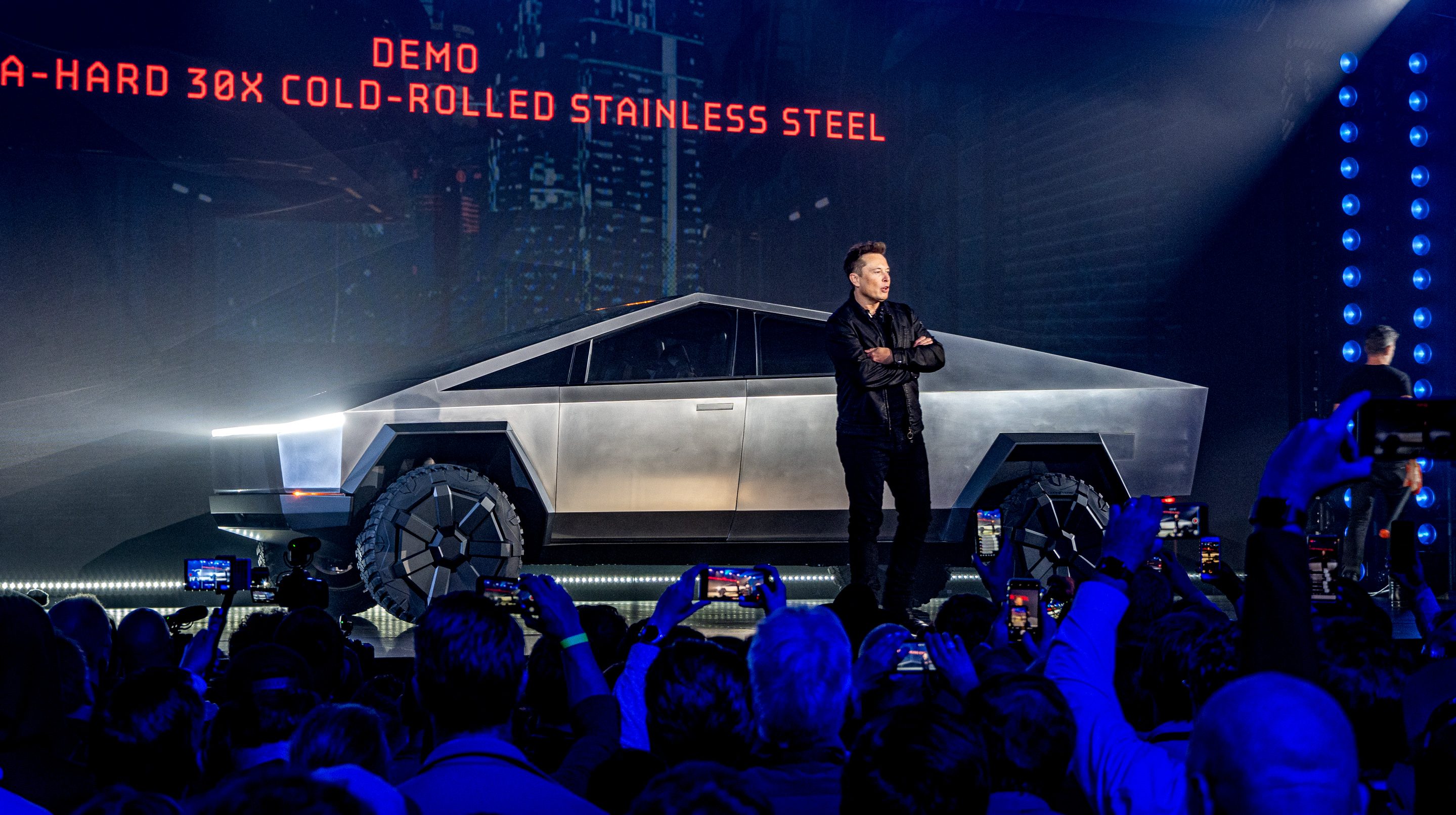

News
Tesla’s unique strategy regarding crucial Cybertruck details is the best ad there is
Tesla has had a unique strategy with the all-electric Cybertruck since it was first unveiled four years ago in Los Angeles. It might be the best advertisement there is.
For the past few years, Tesla has not tipped its hand with certain details regarding the pickup, and some might argue they are the most crucial parts of a vehicle’s buildup, especially for an EV: price, trim levels, and range.
It is an ongoing strategy that has been keeping the Cybertruck in the public discussion of the entire automotive sector for the last few years as the prices have gone from $39,990, $49,990, and $69,990, to whatever your best guess is.
A company that has been headstrong against the prospect of advertising, Tesla knows how to stimulate consumer discussion around itself. After all, its CEO Elon Musk also owns X, which less than a year ago was known as Twitter. Musk is no stranger to being in a headline, and he knows how to get people talking. Perhaps a genius in advertising, too, the CEO has everyone buzzing about what the Cybertruck will cost and how long it will go on a single charge.
Credit: Tesla Inc.
But this might be exactly the buzz Tesla and Musk want, even if it is keeping the most loyal fans in the dark about the particulars of what is its most unique vehicle yet. Even those who are not EV enthusiasts and have no interest in the Cybertruck want to know what a stainless steel-covered pickup will cost and what its capabilities are.
Instead of spending hundreds of thousands of dollars on ads and millions more on an general advertising budget, there is the advantage of curiosity that Tesla has shamelessly adopted and used to its advantage, all leading up to this Thursday. It is no secret that pricing is likely going to be different than what it was in 2019. Too much has changed from a macroeconomic perspective.
But the jury is still deliberating on what this strategy entails. Has it worked on creating buzz? Obviously. Is it fair to the consumer? Not necessarily.
Tesla CEO Elon Musk unveils futuristic Cybertruck in Los Angeles, Nov. 21, 2019 (Photo: Teslarati)
There are no products that come to mind for me when I think of an imminent launch and lack of details in terms of pricing and capabilities. Imagine if Apple reworked the iPhone and decided to keep the price a secret, at least until hundreds of people lined up outside of their stores and showed up to buy it, only guessing what their credit card bill would be the following month.
With a car, it’s obviously different. It’s a long-term payment structure because the truck is going to cost tens of thousands, much more than an iPhone. Even still, this argument can be used to support the counterargument: if people are going to spend this much on a vehicle, isn’t there a reason for them to have an idea of how much they will pay?
This leads to several ideas about the delivery event this Thursday in Austin. As the Cybertruck’s Certificate of Conformity, Certificate Information, and Application have yet to be published by the EPA, it is interesting to think about who exactly will be taking delivery of the Cybertruck this week. It might be influencers who were sworn to secrecy by an NDA, it could be employees, and of course, it could be regular people who just happened to place a reservation very early, perhaps just moments after the configurator was launched.
Credit: Joe Tegtmeyer | X
Whoever does get their hands on an early Cybertruck build will be lucky, as rumors of between 10 and 30 units being delivered on Thursday have both circulated. There are at least a million orders for the Cybertruck, Musk said on the most recent Earnings Call.
No matter what happens, the Cybertruck has been an advertisement in itself, and it has concentrated the entire automotive industry’s attention this week. All eyes are on Tesla and the Cybertruck, as a vehicle four years in the making is finally here, and it is perhaps the best advertisement the automaker could have ever had for itself.
Don’t hesitate to contact us with tips! Email us at tips@teslarati.com, or you can email me directly at joey@teslarati.com.

News
Tesla starts showing how FSD will change lives in Europe
Local officials tested the system on narrow country roads and were impressed by FSD’s smooth, human-like driving, with some calling the service a game-changer for everyday life in areas that are far from urban centers.

Tesla has launched Europe’s first public shuttle service using Full Self-Driving (Supervised) in the rural Eifelkreis Bitburg-Prüm region of Germany, demonstrating how the technology can restore independence and mobility for people who struggle with limited transport options.
Local officials tested the system on narrow country roads and were impressed by FSD’s smooth, human-like driving, with some calling the service a game-changer for everyday life in areas that are far from urban centers.
Officials see real impact on rural residents
Arzfeld Mayor Johannes Kuhl and District Administrator Andreas Kruppert personally tested the Tesla shuttle service. This allowed them to see just how well FSD navigated winding lanes and rural roads confidently. Kruppert said, “Autonomous driving sounds like science fiction to many, but we simply see here that it works totally well in rural regions too.” Kuhl, for his part, also noted that FSD “feels like a very experienced driver.”
The pilot complements the area’s “Citizen Bus” program, which provides on-demand rides for elderly residents who can no longer drive themselves. Tesla Europe shared a video of a demonstration of the service, highlighting how FSD gives people their freedom back, even in places where public transport is not as prevalent.
What the Ministry for Economic Affairs and Transport says
Rhineland-Palatinate’s Minister Daniela Schmitt supported the project, praising the collaboration that made this “first of its kind in Europe” possible. As per the ministry, the rural rollout for the service shows FSD’s potential beyond major cities, and it delivers tangible benefits like grocery runs, doctor visits, and social connections for isolated residents.
“Reliable and flexible mobility is especially vital in rural areas. With the launch of a shuttle service using self-driving vehicles (FSD supervised) by Tesla in the Eifelkreis Bitburg-Prüm, an innovative pilot project is now getting underway that complements local community bus services. It is the first project of its kind in Europe.
“The result is a real gain for rural mobility: greater accessibility, more flexibility and tangible benefits for everyday life. A strong signal for innovation, cooperation and future-oriented mobility beyond urban centers,” the ministry wrote in a LinkedIn post.
News
Tesla China quietly posts Robotaxi-related job listing
Tesla China is currently seeking a Low Voltage Electrical Engineer to work on circuit board design for the company’s autonomous vehicles.

Tesla has posted a new job listing in Shanghai explicitly tied to its Robotaxi program, fueling speculation that the company is preparing to launch its dedicated autonomous ride-hailing service in China.
As noted in the listing, Tesla China is currently seeking a Low Voltage Electrical Engineer to work on circuit board design for the company’s autonomous vehicles.
Robotaxi-specific role
The listing, which was shared on social media platform X by industry watcher @tslaming, suggested that Tesla China is looking to fill the role urgently. The job listing itself specifically mentions that the person hired for the role will be working on the Low Voltage Hardware team, which would design the circuit boards that would serve as the nervous system of the Robotaxi.
Key tasks for the role, as indicated in the job listing, include collaboration with PCB layout, firmware, mechanical, program management, and validation teams, among other responsibilities. The role is based in Shanghai.
China Robotaxi launch
China represents a massive potential market for robotaxis, with its dense urban centers and supportive policies in select cities. Tesla has limited permission to roll out FSD in the country, though despite this, its vehicles have been hailed as among the best in the market when it comes to autonomous features. So far, at least, it appears that China supports Tesla’s FSD and Robotaxi rollout.
This was hinted at in November, when Tesla brought the Cybercab to the 8th China International Import Expo (CIIE) in Shanghai, marking the first time that the autonomous two-seater was brought to the Asia-Pacific region. The vehicle, despite not having a release date in China, received a significant amount of interest among the event’s attendees.
Elon Musk
Elon Musk and Tesla AI Director share insights after empty driver seat Robotaxi rides
The executives’ unoccupied tests hint at the rapid progress of Tesla’s unsupervised Robotaxi efforts.

Tesla CEO Elon Musk and AI Director Ashok Elluswamy celebrated Christmas Eve by sharing personal experiences with Robotaxi vehicles that had no safety monitor or occupant in the driver’s seat. Musk described the system’s “perfect driving” around Austin, while Elluswamy posted video from the back seat, calling it “an amazing experience.”
The executives’ unoccupied tests hint at the rapid progress of Tesla’s unsupervised Robotaxi efforts.
Elon and Ashok’s firsthand Robotaxi insights
Prior to Musk and the Tesla AI Director’s posts, sightings of unmanned Teslas navigating public roads were widely shared on social media. One such vehicle was spotted in Austin, Texas, which Elon Musk acknowleged by stating that “Testing is underway with no occupants in the car.”
Based on his Christmas Eve post, Musk seemed to have tested an unmanned Tesla himself. “A Tesla with no safety monitor in the car and me sitting in the passenger seat took me all around Austin on Sunday with perfect driving,” Musk wrote in his post.
Elluswamy responded with a 2-minute video showing himself in the rear of an unmanned Tesla. The video featured the vehicle’s empty front seats, as well as its smooth handling through real-world traffic. He captioned his video with the words, “It’s an amazing experience!”
Towards Unsupervised operations
During an xAI Hackathon earlier this month, Elon Musk mentioned that Tesla owed be removing Safety Monitors from its Robotaxis in Austin in just three weeks. “Unsupervised is pretty much solved at this point. So there will be Tesla Robotaxis operating in Austin with no one in them. Not even anyone in the passenger seat in about three weeks,” he said. Musk echoed similar estimates at the 2025 Annual Shareholder Meeting and the Q3 2025 earnings call.
Considering the insights that were posted Musk and Elluswamy, it does appear that Tesla is working hard towards operating its Robotaxis with no safety monitors. This is quite impressive considering that the service was launched just earlier this year.








